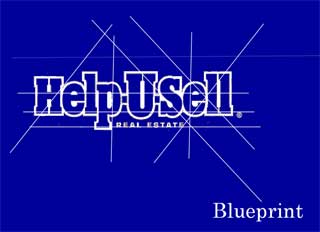Yesterday, on the regular Wednesday Help-U-Sell training webinar, we worked on the Buyer Inquiry. I think this is one of the more critical moments in the client life-cycle, if not the most critical. It’s the place were all of the power and energy of the marketing program falls right into the hands of the person answering the phone. This is the Arena for your real estate career, where it all happens. It’s the Moment of Truth you will either leave with the beginnings of a client relationship or leave with nothing. It is clearly where the rubber of all your preparation and hard work meets the road. I am absolutely convinced that this is the single most important skill to polish if you want to increase your production and your own bottom line . . . and I’m not kidding or puffing the goods.
Think about it: if 1 in 10 buyer inquiries make it to the closing table, how much better would your income be if 1 in 5 buyer inquiries made it to closing? Right: Twice as good. So, without even listing more or improving your closing ratios, you could double your income right now by mastering this little five to ten minute phone conversation!
You are in business to help people sell and purchase real estate. Your measure of success is closed transactions. You spend thousands of dollars each month to attract the buyers and sellers who will fuel that process. The Buyer Inquiry phone call is the bridge that connects all of your marketing dollars with the big payoff of a closing.
Think about your car for a moment. You have an engine under the hood. It’s powerful, but all by itself it’s not going to take you anywhere. To GO, you have to have something else: spinning wheels. Of course, without the engine, the wheels don’t spin and you still don’t go anywhere. In your car, there is a contraption that sits between the engine and the wheels that translates the power of the engine into the spinning of the wheels and it’s the Transmission.
In your office, Marketing is the engine. It powers everything. The end result, the spinning wheels, are closings – that’s what we want. But without a strong transmission – the well executed Buyer Inquiry call — we don’t go anywhere. Let’s put some numbers to that.
Let’s assume it costs $85 to make the phone ring one time in your office with a potential buyer on the line. Now, I didn’t just pluck that $85 from thin air. I’ve been working with brokers on operational issues like this for 30 years and I can tell you those who did the math were usually surprised to discover that every buyer inquiry cost between $80 and $100 dollars to generate. If you were to add up everything you spend to market your company and then divide that by the total number of buyer inquiries you receive over a period of time, you’d know your own cost . . .
So, everytime you pick up the phone and it’s a potential buyer on the other end, just picture that you’re holding about $85 in your hand. You can either toss it in the trash can . . . or you can INVEST it in your business by capturing that buyer lead. The payoff for capturing the lead can be very large: like about $6,000 – that’s what the average buyer side commission is in Help-U-Sell today.
Of course, you know and I know you’re not going to get every single buyer inquiry to the closing table. In fact, you probably won’t get most of them. But let’s just assume it takes 50 buyer inquiries to create one closing – then your cost to create the closing (not counting your time showing, negotiating and handling details) is $4,250 (50 inquiries X $85 per inquiry), and that leaves a pretty small return at the end of the day . . . one for which it’s probably not worth staying in business!
So, let’s see what happens when we start doing a better job on the phones. Let’s assume for every 10 buyer inquiries we receive, we are able to get one to closing. Then our investment (at $85 per inquiry) is $850 and that’s starting to look like a pretty good return: invest $850 to receive $6,000? Pretty good.
But, I think you can do better than that. I believe if you work on the Buyer Inquiry diligently and continuously, you can get that down to 1 in 5. And now your investment is $425 (5 x $85) and your $6,000 return is more than $10 for every $1 invested in marketing. Now that’s a business worth having.
At Help-U-Sell, we have a tool for capturing that buyer inquiry and turning it into a prospect. It’s the Buyer Data sheet and it is utterly simple and brilliant at the same time. You owe it to your income, your career, your office, your family . . . but mostly to yourself, to practice handling incoming calls every week (if not every day). If you are a broker/owner, make role play of the Buyer Inquiry part of your company culture. Do it every week, several times a week. Do it so often that the natural discomfort that comes from exposing your skill level before your peers goes away. Do it until it just becomes what you do in your company. If you are an agent, make a pact with a partner. Commit to regular focused practice on this one key skill. Role play, critique, try different scenarios. If you do, I promise: you’ll see a corresponding increase not only in your numbers of buyers, transactions and closings . . . but also in your income.


